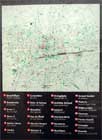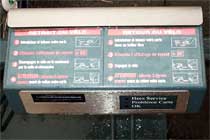Building an Automated Community Bike Program Project
Summary
Author: Jared Benedict
| jared AT wonka DOT hampshire DOT edu
Last Updated: 05/05/2002
Table of Contents
- Abstract
- About this Project
- Introduction
- History of Community Bike Programs
- Program Types
- Anarchic Program
- Co-op or Club Program
- "Dumb" Locking Rack Program
- "Hub" Program
- Automated Computerized Check-Out
- Prerequisites
- System Design
- General Information/Big picture
- Rack Design
- Rack Components
- Community Bike Project Rack Design
- Amsterdam Depo Rack Design
- LeisureTec Rack Design
- Adshel Rack Design
- Vehicle Design
- Off-The-Shelf Bicycles
- Shaft-Drive Bicycles
- MAKRO Bike Design
- CIOS Bike Design
- Community Bike Project Vehicle Design
- Amsterdam Depo Bike Design
- Adshel Bike Design
- LeisureTec Bike Design
- Vehicle Identification
- Community Bike Project Vehicle Identification
- White Bike Depo Vehicle Identification
- Adshel SmartBike Vehicle Identification
- LeisureTec BikeStation Vehicle Identification
- Vehicle Sign-out
- Vehicle Sign-in
- System Communication
- Community Bike System Communication
- White Bike Depo System Communication
- Adshel SmartBike System Communication
- LeisureTec Bike System Communication
- Software
- Community Bike Proejct Software
- Community Bike Project Database
- Community Bike Proejct Software
- User Karma
- Data?
- System Administration
- System Cost
- Liability
- Frequently Asked Questions
- References
- Acknowledgments
Abstract
This document covers the basic concept of community bike programs. Their history and implementations are briefly discussed with pointers to more in depth information. It then covers in more detail the various implementations of automated community bike programs. The various components of existing automated systems are documented. Both philosophical issues and technical details are covered as well.
This document describes how automated bike programs work, how they have been historically implemented, what works, what doesn't, and the specifications needed to implement a successful program of your own. It has been broken down into specific sections to make comparing the different implementations straight forward.
While I try to cover all the bases in this document, its main focus is the technical aspects of the various automated bike program implementations. For less technical information on community bike programs please see the Resources section.
About this Project
Project History
This document is the result of a Hampshire College Division III (similar to a Senior Honors project) by me, Jared Benedict. I spent my two last semesters (Fall 2001 - Spring 2002) working on the project. I researched past implementations of community bike programs. I then designed and built a prototype of an automated rack system which verifies users and allows them to check-out and check-in vehicles from the unattended rack.
During my research, it became obvious that there was a fair amount of general information about bike projects, but it was extremely disconnected and disorganized. It was also difficult to find technical information about how existing automated bike systems worked. I decided to document every piece of information about community bike projects in one place. And any holes, I hoped to fill on my own. I decided to start a website, CommunityBike.org to house this information. In keeping with the roots of the original community bike programs, I also decided I wanted my findings to benefit communities and not my pocket. I decided to publicly share all the details that I learned during the design and prototyping of my automated system in hopes that this information would benefit interested individuals in the future.
Goals of the this Project
- Learn more about current and past community bike projects implementations.
- Learn more about Automated bike projects.
- Determine why Automated bike systems haven't been more successful and what can be done to make a successful project.
- Design and develop an Automated Community Bike program and share findings
for anyone to use.
Introduction - Problem
A community bike program comes in several different forms. The basic premise is a collection of bicycles for the community to use for transportation, exercise, and entertainment.
The most basic implementation of community bike programs is one of philosophical synergies. Collected bicycles are, "owned by everyone and no one". They are fixed up and released into the community for anyone to use. If you happen to come by one, hop on, ride to your destination and leave it there for the next person. The bicycle could go all day without stop.
In theory, the idea is wonderful, in practice the program is plagued with problems which ultimately lead to the programs demise. The most serious of problem is accountability. While most community members will act responsibly, it only takes a few individuals to quickly deplete your fleet of bikes. Community bikes are routinely stolen, thrown in rivers, ridden with flat tires, left in remote locations, and on and on. In the most basic type of community bike programs, there is almost no individual accountability for users of the system. People know there will be no consequences for their actions, so it is difficult for the program and the program to get the respect it deserves.
The issue of individual accountability has been the focal point of several derivative community bike programs for the past few decades (see the Program Types section for details). These efforts have certainly helped the success and effectiveness of community bike programs, but they also have their drawbacks. To increase accountability the derivative programs typically raise exclusivity. While these derivative programs have made great progress using low tech solutions, they still do not implement accountability at an individual level.
With over 40 years to reflect, and new advances in technology, it is now possible to implement a community bike program which is even more convenient for community members, but allows the program to implement accountability at an individual by individual level.
The latest automated community bike programs are similar in concept to a Public library. With books, there is no need for every individual to have a vast collection of their own when that individual will only use the book for a short amount of time. Both individually owned books and individually owned bicycles (and other vehicles for that matter) spend the majority of their useful lifespan unused, books gathering dust on a bookshelf, bikes often gathering dust in a garage. Even a bicycle or a car which is used every day to commute to work spends a majority of the day locked and idle.
Public libraries have addressed the issue by letting any community member check-out a book for a predetermined length of time. The person who signs out the book, can bring the book anywhere, and do anything with it they please. They are however held individually responsible. If the book is returned late, damaged, or never returned at all, that individual must suffer the consequences of their actions. This usually includes some sort of charge for returning the book late, or payment to replace the book.
If public libraries were implemented in the same manor as the original community bike programs, its shelves would quickly become bare and the library would be useless. Some individuals would return books, but without any individual accountability, there is no incentive to do so in a timely manner or at all.
Like a public library, the latest iteration of bike programs, allow any community member access to a bicycle, designates where they can find the bicycle, puts certain restrictions on the use such as a time limit for use, and it most importantly holds that individual accountable if the rules are not followed.
Purpose of Community Bike Programs
While individual accountability is the feature which makes a community bike program sustainable, there are several reasons to actually implement one in a community:
- Provide a viable alternative method of inter-community transportation.
- Provide transportation which does not require the individual to follow a specific schedule like other means of public transportation.
- Offer a complimentary method of transportation to existing public transport (Buses, Subway, etc.)
- Reduce privately owned bicycle theft. - Hundreds of thousands of bicycles are stolen every year. The two most popular reasons for theft are to sell the bicycle, or convenience theft where the thief simply wants to quickly get across town. Community bike programs can provide an alternative to convenience theft.
- Reduce traffic congestion.
- Support community development by including the community in the program.
- Increase interaction of community members by getting them out of their cars.
- Improve the health of community members.
- Increase community distinctiveness - A community bike program makes your community distinct and memorable. It provides an opportunity to increase tourism. It's also a way for tourists to get to know your community.
- Support traditional "village" communities. Prevent sprawl.
History of Community Bike Programs
The first well documented community bike program implementation was in Amsterdam, Netherlands in the 1960's. The program was conceived by Luud Schimmelpennink, a member of the anarchy group, "Provo".
Provo conceived of several "white plans" including the White Bicycle Plan. The proposal called for closing off the center of the city to motorized traffic and in it's place distribute 20,000 white bicycles free for anyone to use. The group and their plans received international exposure due to violent actions which were taken by the police against Provo. The exposure likely was responsible for sparking the interest of others who attempted to implement similar community bike programs around the world. See the Provo page for more information on the group and their history. See the Amsterdam page for more information on the original white bike implementation, the latest efforts by Luud, and some general bike culture information about the city.
Since the sixties, dozens of community bike programs have been implemented. Most of which use the same principle as the original. Most programs quickly failed. Bikes were stolen, vandalized, thrown in rivers, disassembled for parts. These common problems prompted several derivative programs.
Program Types
While each community bike program implementation is unique, each tends to falls into a general program category.
"Anarchic" Program
The original and most basic type of community bike project uses gathered bicycles, often donated from the community, which are brought to working order, usually painted a bright or distinct color, and simply released into the community.
This type of project is the most common, but it has historically been plagued with several problems. Because of the pitfalls, successful projects of this type are rare.
There are certain elements which increase the chances of a successful program:
Enthusiastic implementers that aren't easily deterred.
Lots of volunteers.
A constant supply of bicycles.
Benefits
- Fairly easy to implement - Anarchic systems require almost no infrastructure or real budget to start. With some effective publicity you can get community members to donate their unused bicycles for free.
- Encourages (requires) community involvement.
Pitfalls
- The programs usually depend heavily on one or a couple enthusiastic individuals. If they lose interest, the program will likely fail.
- Anarchic programs require a huge number of bicycles for it to become even close to a depended upon mode of transportation. It of course, requires a huge amount of effort to keep lots of bikes in working order.
- There is no individual accountability beyond pressure from other community members to respective the system.
- Vehicles get left in low traffic areas.
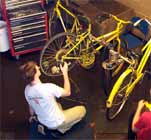
Picture 1: A Hampshire College student repairing
a community bike.
Co-op or Club Program
Co-op or Club programs make bikes available to a defined group of individuals. For example, by paying a club fee, you will be given a key or combination which is used to unlock bicycles. The bicycles are only available to people in the group. Some programs have designated places to leave the bicycles, others just request you lock the vehicle to a secure object anywhere within the community.
Benefits
- The participants are more likely to be committed to the success of the program since they are part of an "exclusive" group which has often paid to be a member.
Pitfalls
- Does not hold group members individually accountable for poor actions. There's nothing preventing even club member from taking a bike home with them.
- There isn't any incentive to leave a bicycle in a designated place.
"Dumb" Locking Rack Program
"Dumb" locking rack programs use a low-tech solution to give incentive for users to return the bicycles to a designated locking rack. The program uses specially designed racks in designated locations. The bicycles lock to the rack with a coin operated lock. A user puts a coin into the lock to unlock the bicycle. To get the coin back, the bicycle must be returned to a rack. As long as you return the bicycle, the program is free.
In response to problems which have plagued First Generation projects, slightly more advanced programs have popped up that used special locking racks.
The system works similarly to systems found with shopping carts at grocery stores. The user deposits a coin in the lock, and the bicycle is unlocked. When the bicycle is returned to one of racks, their deposit is returned.
Benefits
- Low-tech, simple solution.
- Some level of incentive to return vehicle.
- Community knows where to find a bike.
Pitfalls
- There isn't a huge incentive for users to return the bicycle in a timely manner or at all. By inserting a coin, you get unlimited access to a bicycle. It's possible for users to insert a coin and simply take the bicycle home.
- Because there is no time limit, bicycles may be used by a single individual for a long time. Users could conceivably lock the bike outside while doing errands etc. preventing others from taking advantage of the system.
- The use of custom bicycles is highly advised. Off-the-shelf bicycles will likely be stolen.
- Some countries, such as the United States, don't have a coin that is worth enough to get people to return the bicycles.
- The system does not provide any vehicle tracking. Users may go to an empty rack in hopes of signing a bicycle out, or arrive at a full rack.

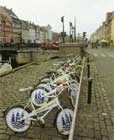

Picture 1: An empty "dumb" locking
bike rack in Helsinki with a map at the end. Photo Paul
DeMaio
Picture 2: A full "dumb" locking bike rack in Copenhagen. Photo
Paul DeMaio
Picture 3: A close up of the front of a Helsinki City Bike. The coin operated
lock is mounted on the top of the headset. Photo Paul
DeMaio
Non-Automated "Hub" Program
Non-Automated "Hub" programs bring individual accountability to the program through means of checking out a bicycle from a human attended hub. Users typically must sign up and get a program identification card. They then visit any of the designated hubs around the community to sign out a bicycle. The hubs are usually at businesses, shops, churches, youth centers, bike shops, libraries, etc..
This type of program uses a low-tech solution to a program with individual accountability. Implementations of this project include the St. Paul and Toronto Community bike programs.
Benefits
- Provides individual accountability without the need for expensive custom bikes and racks.
- By getting community businesses etc. acting as a hub, they will become more committed to seeing the program succeed.
- Possible to use off-the-shelf bicycles.
Pitfalls
- Lots of work involved recruiting community businesses etc.
- Hubs likely aren't going to be open all the time.
- Could be an involved process to sign out a vehicle. If the shop owner is busy for example.
- Not well suited for communitites such as Colleges where there are no shops or regularly attended buildings.
Automated Computerized Check-Out
Automated check-out systems are the latest and most advanced type of community bike program. There are a couple of similar variations being developed and used, which allow users to check-out a bicycle from an automated, unattended rack by using personal identification.
Each bicycle is locked to a specially designed rack. Users swipe an identification card, the user is identified, and a bicycle is unlocked. The person, and bike id are entered into a database.
There have been three actual implementations of automated bike systems. Because of the expense and advanced technology involved each has lost, to varying degrees, the element of community in a community bike program. In fact two of the three, LeisureTec's BikeStation and Adshel's SmartBike were never intended to have a community component at all. According to their website LeisureTec's BikeStation was designed by people that rented bikes and wanted a system which didn't require a human to rent bikes out. They're primary motivation appeared to be money. Adshel's system has similar motivations. They only implement their bike system in cities which buy street furniture such as bus stop shelters from them. Adshel then advertises on the bus shelters. Their bike system was designed to add incentive to cities to choose Adshel as they're provider of street furniture. It is an enticing deal. Adshel typically retains ownership of the bike system, but installs and operates it on their own.
More information about these implementations is available here and throughout this document:
Amsterdam White Bike Depo Program
Adshel Clear Channel Smart Bike Program
Benefits
- Individual accountability
- Stolen bikes and vandalism is greatly diminished.
- Community always know where to go to find a bicycle.
- Maintenance and number of individuals required to keep the system running is minimized.
Pitfalls
- Expensive
- If a rack is full, users must go to another rack. (Some programs require you to enter your end destination when checking out a bicycle.)
- Depending on traffic patterns in your community, you may be required to redistribute bicycles to empty racks.
Automated Bike Program Challenges
- Convincing people that a bicycle is a vehicle for transportation, not just a recreational toy.
- Bicycles and scooters are likely not usable or safe in snowy conditions.
- Automated community bike programs, which use computer check-out are expensive.
- Finding funding.
- Getting the community administration's support.
- The community must be involved and feel ownership for such a project
to succeed. In an anarchic system, the sense of ownership is greater when
users donate their own bicycles or volunteer their time to fix bicycles.
Because of the complexity of a computerized check-out system, certain
aspects will require specialized knowledge which may limit community involvement.
While community involvement should remain a top priority, a computerized
check-out system is designed to be a true transportation alternative.
Anarchic systems on the other hand rarely if ever get to that stage. Finding
a yellow bike on Hampshire campus when one needs it is a rarity and convenience,
not something people expect or depend on.
- Some communities may have traffic patterns which require program maintainers to transport vehicles from racks at popular destination, to popular departure areas. The status of racks can be remotely monitored and data can be archived over time to predict when certain racks may need attention.
Prerequisites
There are several prerequisites to build your own successful Automated Community Bike Program. Luckily, there are likely members of your community which have enough knowledge to fulfill the prerequisites. You just need to find them.
- Community support - You will of course want people to actually use the program. Talk to members of the community. See if it is something that would actually get behind you and support.
- Administrative support - If the "higher-ups" do not support you, you will have a very steep hill to climb. Get them on your side early. There are several good reasons, covered in this article, which will help your case.
- Money - You can lower the cost greatly by being creative and replacing money with adding person hours.
- Computer experience - You'll need to be able to at least install
and configure the following:
- Linux
- mySQL
- Perl
- Perl/Tk
- PHP
- Metal Building Tools - You will need some sort of access to
tools for building the racks and possibly vehicles.
- Welder etc.
- Electronics Knowledge - At the least, you will need to be able to solder simple circuits.
System Design
General Information/Big picture
There are many components involved in an Advanced Community Bike Program. Both hardware and software must be built and must be highly integrated. The hardware includes vehicle racks which are permanently installed around the community. Each rack includes several docking stations and a computer which takes care of identifying users, identifying vehicles, controlling dock locks and communicating this information back to a central database server. In addition to the racks, you will need vehicles with locking bars mounted on the front. The vehicles themselves can be off the shelf bicycles or scooters. However, such vehicles have several disadvantages. Some of these disadvantages can be fixed with some simple modifications. Alternatively, some bike programs use custom designed vehicles which have many benefits.
Rack Design
The vehicle rack is typically installed in high traffic areas around your community. It is used to secure vehicles when not in use, and unlock them when a user signs it out. The rack must be very well built to withstand vandalism and rough weather conditions. To prolong the life of a rack and the vehicles, the rack should be built with materials that resist corrosion. If possible, the rack should have a roof structure to keep the rack, its components, and the vehicles as dry as possible.
The rack can become expensive due to the durable construction and internal components. There are a couple ways to lessen the cost.
- Use only one, center oriented check out "terminal"- A rack designed with one check out terminal can lower the amount of hardware required. Some rack designs have a id card reader at each dock. This provides a small amount of convenience, but raises hardware costs.
- To decrease the chance of vandalism, do not use a cash payment system - If you implement an automated system and charge for each vehicle use, have your users first register and then use an identification system such as smart card or magnetic stripe cards. By doing so, there will be no need to have cash stored at each rack.
Community Bike Rack Design
The Community Bike project rack was designed to minimize the amount of hardware required to lessen cost and complexity. It uses a single computer which is located in the center of the rack to minimize the distance from the screen to each dock.
The docks are designed at a height which could accommodate more than one type of vehicle.

Picture 1: A mockup design of the Community
Bike rack.
White Bike Depo Rack Design
Adshel SmartBike Rack Design

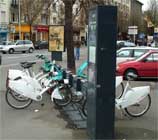
Picture 1: A computer generated image of the
Adshel rack.
Picture 2: A photo of an Adshel SmartBike rack. Rennes, France March 2002.
LeisureTec Bike Rack Design
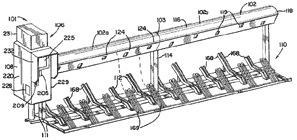
Picture 1: A drawing of the LeisureTec BikeStation
rack.
Rack Components
Rack Computer
Each rack will need a computer to control they docks and authenticate users.
Community Bike Rack Computer
The system was designed to use a fairly slow, low powered computer at each rack. The computer requirements include: 2 serial ports, some sort of network connection, and able to run Perl and Perl/Tk. The code was developed and tested using the Linux operating system with X Window.
Adshel SmartBike Rack Computer
Station Controller : the box that contains all electronics for local network management and communications hardware. It is equipped with an intelligent controller. Communication is based on GSM protocol, the GSM being used is the Siemens Module M1. (Source)
Host Controller : this is a remote computer. It is equipped with NT server version 4.0 or higher, Back Office for NT and a digiboard with multiple serial channels for modem management. (source)

Picture 1: Photos of the rack computer installed
at each Adshel rack.
Amsterdam White Bike Depo Rack Computer
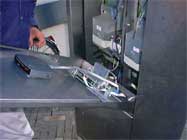
Picture 1: A photos of the internal electronics
of the White Bike Depo stall.
Docking Bay and Locking Bar
Each rack has several, typically 6-12, "docking bays" which are responsible for locking and identifying the vehicle. Each vehicle has a locking bar, usually securely mounted to the front, which is inserted into a docking bay. These mechanisms vary in design, but all serve the same function.
Because the docking bay is responsible for preventing vehicle theft, it must be very strong and tamper proof. There is a fair amount of precision required when guiding a bicycle or other vehicle into the docking bay. In addition, returning a vehicle must be an effortless process for users. Therefore extra thought must be put into the design of the docking bay so that it is simple to use and extremely reliable.
The locking bar, mounted on each vehicle, usually contains some mechanism which is inserted into a lock in the docking bay. It also will likely have some mechanism to uniquely identify the vehicle.
Locks
Each dock must have a lock which can be computer controlled. The lock should be fail-secure. If the power ever goes out, the locks will remain in the locked position, keeping the bicycles secure.
Community Bike Locking
I spent a lot of time trying to find an ideal locking mechanism. However, it was very difficult to find anything that wasn't designed for doors. And even that selection was small. I found electric locks to be expensive. I hoped to modify a cheap electric lock but it turned out to be overly complicated and a less than ideal result. Although I knew I didn't have the ideal lock, I decided to move forward with the prototype and continue the search as I worked on other elements of the project.
Although I'm still hopeful of finding a lock which meet my requirements, plan b is to use a deadbolt lock. This has a couple ramifications. Those that I've found are larger which will require the dock to be slightly redesigned. The physical movement of the deadbolt requires a change in how the system controls the lock. For instance, the lock must be engaged when a vehicle is returned with a deadbolt lock. With some sort of spring loaded lock, this is unecessary.

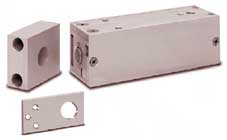
Picture 1: An electric deadbolt lock.
Picture 2: An electric deadbolt lock.
Community Bike Docking
Although the design is not finalized, the Community Bike project has come up with what we think is a simple, tamperproof docking and locking bar mechanism.
The docking bay consists of an electric lock (likely an electric deadbolt) and a touch memory reader recessed a couple inches within a "funneled" rectangular opening. The funnel shape would help guide the vehicle locking bar into the center opening. Once the locking bar enters the opening, the touch memory identifier comes in contact with the touch memory reader, and the lock is engaged. (See the Vehicle Identification section for more information on how the touch memory works.)

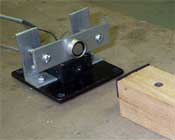
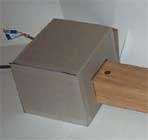
Picture 1: Back view of prototype locking
bar and docking bay mechanism.
Picture 2: Front view of prototype locking bar and docking bay mechanism.
Picture 3: Prototype of locking bar inserted into docking bay enclosure.
The locking bar fastened to each vehicle has no moving parts. It functions properly in any weather conditions and can not be easily tampered with. It will most likely be made of a solid metal material and permanently welded to the vehicle.
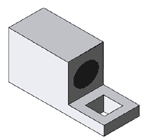
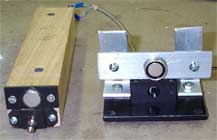
Picture 1: A crude drawing of a probable locking
bar design.
Picture 2: Front photograph of the prototype locking bar (left) and docking
bay mechanism (right)
Adshel SmartBike Docking
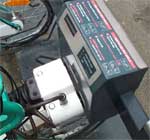

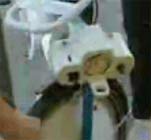
Picture 1: Adshel docking bay with bicycle/locking
bar inserted.
Picture 2: Adshel docking bay empty from front.
Picture 3: Front view of the locking bar on the front of the bicycle.
LeisureTec Docking
The LeisureTec design used a looped locking bar securely fastened to the bicycle. The locking bar was guided into the dock. According to the LeisureTec patent, the loop was made of hollow metal which could have magnet attached inside. The dock then had a proximity sensor which confirmed the bicycle was actually returned. To identify the individual bicycle, the patent suggests a bar code could be affixed to the locking bar with a bar code reader in each dock, but it sounds as though this was never implemented.
More technical information available in the LeisureTec patent.
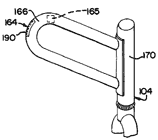

Picture 1: LeisureTec patent figure displaying
the locking bar mounted on the front of a bicycle.
Picture 2: LeisureTec patent figure of the docking bay with locking bar
inserted.
White Bike Depo Docking
From the photos, it appears that the the front fork must be aligned with two docking arms. When the bicycle is inserted, the arms rotate forward. This action presumabely indicates that a vehicle has been returned or removed.
According to reports, returning a bicycle was cumbersome.
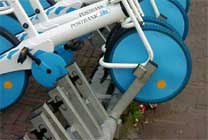
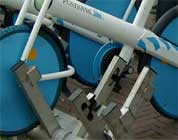
Picture 1 and 2: Close-up Pictures of Amsterdam
white bike docking mechanism. Photos: Stephan
Horlak
Copenhagen Bicycle Locking
Copenhagen uses a low tech "dumb" locking program. A coin is inserted into the lock andthe vehicle is unlocked from the rack. The coin remains secure in the lock until the rack locking mechanism is inserted.


Picture 1: A close-up of the lock used on
the Copenhagen bike program.
Picture 2: A coin operated lock used on shopping carts. The lock is similar
to the one used in the Copenhagen bike program.
Relay Controller Board
This piece of hardware provides the interface between the computer and each dock lock. The board we used, the ADR2200 from Ontrak Control Systems, connects to the serial port of the rack computer and has 8 relays.You will need as many relays on the board as you have docks on the rack. The ADR2200 has the ability to be daisy chained together with other ADR2200. This allows you to control many relays from a single serial port. You can likely find other relays boards that have more relays.

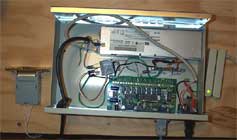
Picture 1: The Ontrak ADR2200 relay board
Picture 2: A photo of the control box prototype. Click for labeled details.
Vehicle Design
A bicycle is a simple, highly efficient mode of nonpolluting transportation, ideal for short range travel. Most off-the-shelf bicycles are not ideal for community bike programs. They often include unnecessary parts which increase the frequency of required maintenance. They are also often appealing to thieves. Off-the-shelf bicycles can be stolen and then resold as a whole, or broken down and sold in parts. There are some off-the-shelf bikes which are better suited for community bike projects, but they still have several drawbacks.
Several attempts have been made to design and construct bicycles specifically for the use in community bike projects. Listed below are the specifications for an ideal community bike which will likely stand up to constant use and help prevent theft and vandalism.
Vehicle Specifications
- Low maintenance, Long lasting parts
- Fewer the number of parts the better
- Non-air filled tires to prevent flats - Foam filled or solid rubber tires decrease the likelihood of a problem with the tire. Flats are one of the most common problems which can put a bicycle out of service.
- No chain - Chains are susceptible to breakage, rust, they fall off, and they can get clothing dirty. Some bicycles designs use direct contact gear driven wheels. See the MAKRO design for an example. Other bikes, such as the CityBike use a chainless shaft-drive system.
- One gear or internal hub gearing - Bicycles with several gears require derailleurs, cables, and shifters. Derailleurs are typically delicate components which can easily be bent and often need adjustment. If the community terrain is flat, a bicycle with one gear will likely suffice. One geared bicycles can also decrease the perceived value of the bicycle to would be thieves.
- Back pedal coaster brake - Coaster brakes are easy to operate, work well in all weather conditions, and require no cables or brake levers.
- Use wheels without metal spokes - Spoked wheels are susceptible to bending and breaking. The wheels often become out of true causing a poor ride. Plastic wheels are inexpensive and require less maintenance.
- Undesirable to thieves
- Heavy - The use of a heavy frame will discourage thieves. It will also discourage riders from going beyond the bounds of your community.
- Nonstandard Parts - While more expensive to manufacture, the use of nonstandard parts will discourage thieves from stealing the bicycle for sale of parts.
- Clearly identifiable
- Unique design - A bicycle which is visually different than "normal" bikes will get attention and make it more difficult for thieves to sell.
- Painted a particular color. Bright colors make the bike more noticeable
- Use of Stickers or other lettering - This makes it clear that it is a community bicycle. Stickers also commonly include information about Liability.
- Ease of use for wide range of body types.
- Small to Medium sized frame - The frame should be small to medium in size to accommodate shorter individuals. Taller people can usually fit and comfortably ride short distances on a bicycle which is too small.
- Low swinging/angled top tube - The frame's top tube should be angled like a traditional "women's style" bicycle. A typical "male style" bicycle has a horizontal top tube. This style frame can be difficult to mount and dismount.
- Ridable in all conditions - Vehicles will be ridden in a wide range
of weather and lighting conditions.
- Fenders prevent the water on the road from coming up and getting riders wet.
- Lights and/or reflectors will increase safety in low lighting.
Off-The-Shelf Bicycles
A few manufacturers make "cruiser" style bicycles which are simplified and better suited for a community bike program than typical off-the-shelf bicycles. They often have one gear and coaster brakes. Further refinements can be made to make the bicycle even more durable and better suited such as replacing the metal spoked wheels with plastic wheels and replacing the air filled wires with foam or solid rubber tires.
Manufacturers of cruiser style bicycles include:
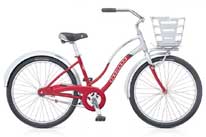
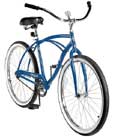
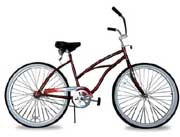
Examples of off-the-shelf cruiser bicycles.
Click for a larger image.
Shaft-Drive Bicycles
A shaft-drive bicycle uses an internal gear mechanism to drive the rear wheel. The shaft-drive component replaces the traditional chain. All the moving parts are enclosed and require almost no maintenance. There is no chain to fall off or get clothing dirty.
The shaft-drive was first used in the late 1800's. According to an AMIS web page, the original shaft-drive systems were heavy and slow. The chain drive technology quickly advanced and became widely used.
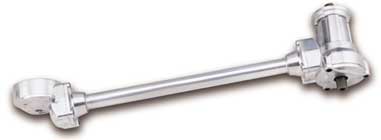
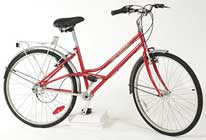
Picture 1: A close up of a shaft-drive mechanism.
Picture 2: A chainless shaft-drive bicycle made by CityBike.
Internally Geared Hubs
Communities with hills will likely require bicycles with more than one gear. Traditional derailleurs require routine adjustments. They also can be finicky to operate, sometimes causing the chain to fall off. Internally geared hubs allow users to have a variety of gears without requiring an external derailleur. Manufacturers such as Shimano make a internally geared hub with up to 7 speeds.
Internally geared hubs also optionally come with an integrated coaster brake.
MAKRO Bike
The MAKRO was designed specifically for community bike programs by Tomasz Kilar. According to the MAKRO web page he describes it:
"I would like to make it clear that my bike is against all new (and even old) tendencies in bicycle design. It is heavy, not comfortable, fitted with low efficient transmission and brakes (that is why thieves and other people do not want to have it). But at the same time it is really heavy duty, low cost in production and maintenance, devastation resistant and extremely strange looking riding machine, that perfectly suits free biking programs."
According to the web page, the MAKRO bike has not yet been manufactured. There is more information available on the MAKRO web page.

Tomasz Kilar's computer generated drawing
of his MAKRO bicycle.
CIOS Bike
Vilhelm Christiansen of Schrøder Cykler and Cycle Import of Scandinavia (CIOS) designed a community bike which is used in the Helsinki and Copenhagen Bike programs.
There is more information available about the bike on the CommunityBike.org CIOS web page
According to Paul DeMaio, the bicycle cost about $325 (US) unassembled.
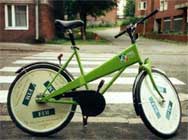
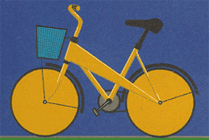
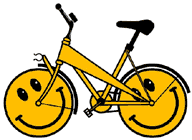
Photo 1:Bicycle from the Helsinki bike program.
The same bike design was used in the Copenhagen bike program. Photo: Paul
DeMaio.
Photo 2: A drawing of the CIOS bicycle taken from a pamphlet.
Photo 3: Another drawing of the CIOS bicycle.
Community Bike
We were impressed by the current community bike designs. However, there are still some drawbacks:
- Custom built bikes can use special parts making them difficult to disassemble and use on other bikes, however, it is more expensive to have custom bikes manufactured, especially in small quantities.
- While bicycles are very simple machines, we wondered if we could do without certain parts which were vulnerable to breaking and maintenance.
- Community bikes are used by a wide range of body types and abilities. While minor adjustments can be made, such as saddle height, they can still be uncomfortable and difficult ride, mount, and dismount for short or tall people. Poor fitting equipment may discourage use, or even be dangerous.
We decided to explore the use of scooters for the following reasons:
- Scooters are typically much simpler.
- Fewer parts translates into lower construction cost and fewer things which will break.
- Their simple design makes them easier to repair.
- Safer
- Scooters have a lower center of balance.
- Scooters fit wider range of body types.
- Standing position makes it easy to mount and dismount.
- Slower speed makes it safer for pedestrians on walkways.
We are explored the use of a slightly modified off-the-shelf scooter for the prototype. The Know-Ped Scooter made by Patmont Motor Werks, met most of our design requirements.
It uses a very simple design with a strong bent tubing frame. It has large, solid rubber tires with plastic wheels to privde a smooth ride, but without the possibility of a flat. The only modifications we made were to replace the wood deck with an aluminium one. The wood deck wouldn't hold up well in rain. The scooter handle folds down to create a compact design, this however was unecessary for our use. The scooter comes with a simple fender rear brake that doesn't need adjustment or wear out. This however doesn't provide a lot of breaking power. A front caliper brake is also included. This helps a lot with stopping power, it would likely be the first part to need maintenance. If the rear fender brake could be modified to provide enough stopping power, we would get rid of the hand brake.
I tested the scooter for several months. It performed very well over a range of surfaces. I found it to be stable and safe to ride.
If you have a small, flat community, a scooter could be an ideal vehicle for an automated community bike program.
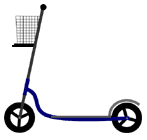
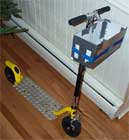
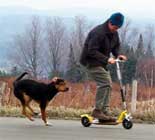
Picture 1: A mockup of a simple scooter design.
Click for labeled drawing.
Picture 2: A photo of a Know-Ped scooter with modified deck and prototype
front basket.
Picture 3: Michael testing the Know-Ped scooter on a flat dirt road.
White Bike Depo Bike
Designed by Luud Schimmelpenink, the white bike uses non standard parts to discourage theft. The Depo website describes the bicycle:
"The bike is solid and the tyres are leak proof. The lights switch on/off automatically and the saddle can be adjusted easily. The bike is equipped with a luggage rack and a ring bell. It has no lock because it is not intended to be parked anywhere outside the depos."
After 30 minutes of use, a resistor makes pedaling harder. When the user feels the extra resistance, it is a sign that the bike should be brought back to a depo. "This ensures that bicycles are not taken out for a ride in the countryside, but stay in the area they are meant for," says Schimmelpenninck. (Source: Down To Earth: City Cycling)
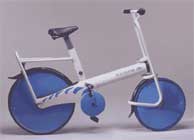
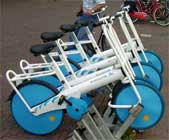
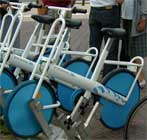
Amsterdam White Bikes. Photo 1 from Depo website. Photos 2 & 3: Stephan Horlak
Adshel SmartBike
According to the Creacom website, the first Adshel bike design was created and manufactured by "the production plant of Cycleurop, at Romilly sur Seine in the Champange [France] area."
The original bicycle included
The first generation bicycle was a French product. It was conceived and fabricated in the production plant of Cycleurop, at Romilly sur Seine in the Champagne - area. Typical features were an integrated dynamo, rear torpedo brake, a five-speed gearbox and covered wheels.

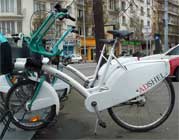
Picture 1: First prototype.
Picture 2: One of the designs used in the Rennes, France program.
LeisureTec Bike Station
According to LeisureTec's website, they used a modified cruiser bicycle made with an aluminum frame. The bicycle had nonstandard parts requiring special tools for disassembly. Each bicycle was equipped with puncture resistant tires, a single gear, coaster brake, and chain gaurd.
Vehicle Identification
To verify a user has actually returned a vehicle, and that it is the same vehicle they checked out, there must be a way to uniquely identify the vehicle. This also enables you to track vehicle use and hold individuals accountable for any positive or negative actions. For example if a vehicle is damaged, the user can be tracked down and charged for the damage.Community Bike Project Vehicle Identification
Several technologies to identify vehicles were explored for the Community Bike project. Initially we explored simple technologies such as having pins on the vehicle which would slide into some sort of reader. Each vehicle would have pins in a unique configuration. A similar technique is used at copy centers such as chinches. They give users a "copy key" which is inserted into a copy machine and counts the number of copies made. It was soon realized that this technology would still require some more technical parts to actually identify the pin locations etc.. In addition, it had a few drawbacks. Pins could be bent, when a vehicle was returned it had to be very precisely aligned, and the number of unique pin combinations could be too small in a large program with several hundred vehicles.
Bar-code technology was explored. Bar-codes themselves are very cheap. They can be printed out and having each bar-code be unique is straight forward. Bar codes are appealing because the bar-code itself is so low-tech, there is nothing to break. However, it was concluded that there were several disadvantages with bar codes which made them unfit. The bar codes themselves could be destroyed or tampered with fairly easily. The bar-code readers are also fairly expensive and fairly fragile. Anyone who has witnessed a grocery cashier repeatedly wave a bar-code past a scanner and finally in frustration enter the number by hand, also knows that the act of reading a bar-code can be nontrivial. In a automated system, when a vehicle is returned there is most likely only once chance to make an identification. Bar-code technology did not provide this requirement.
Radio Frequency Identification (RFID) technology was very appealing. It works by having a microchip on the object you wish to identify and a reader. The reader sends a wireless signal which energizes the chip, the chip then sends back a unique identification number to the reader. This is the same technology which is used with the well known "EZ-Pass" toll booths, and the "Speed Pass" at Mobil gas stations. This technology is attractive because it doesn't require the bicycle to be placed in a very precise position. The chip just needs to come with in a certain range. The identification tags are all going to be unique which allows for any number of vehicles in the system. The tags are also complex enough that they are very difficult to tamper with. Because the system is wireless, it may also be possible to embed the chip in some sort of housing which would make it difficult for users to get to, or even be aware of its existence. While having a wireless interface is useful, it is also problem because it is more difficult to be absolutely sure that the vehicle is actually in the dock. A user could possible get the chip very close to the reader without the bicycle actually being in the docking station. To be absolutely certain the bicycle is in the dock, you need a complimentary technique. Reed switches and proximity sensors were explored. A proximity sensor is a more secure solution and would likely work. However, they are relatively expensive, and the system became considerably more complicated. While the chips which are mounted on the bicycle are inexpensive, the readers themselves were pricey. Unfortunately, you would likely need an RFID reader at every single dock which quickly raised the cost of each rack.
The technology we chose, "touch memory", met all of our requirements. Developed by Dallis Semiconductor, touch memory, also referred to as iButton technology, consists of two basic parts. An chip with a unique identification number and a reader connected to a "1-Wire" network. Dallis Semiconductor manufactures the chip in an "iButton" case which looks like a large watch battery. When the iButton is inserted into a reader, it completes a circuit. The chip gets enough power from the bus to send the identification number onto the network. The iButton is built to easily withstand a wide range of temperatures, operate in dirty conditions, and can be roughly handled. Additionally, both the the iButton itself and the parts to make a reader and network are very inexpensive. Unlike RFID, Touch memory must come into physical contact with the reader in order for identification to take place. The downside to this is there must be some precision when the vehicle is returned. It is very beneficial, however, because it simultaneously identifies the vehicle and ensures the vehicle is actually in the docking station. The issue of precision and other possible design issues are covered more in the design section.
White Bike Depo Vehicle Identification
Microchip. Details unknown.
Adshel SmartBike Vehicle Identification
According to Creacom's website, vehicle identification is accomplished by, "a twin antenna tag read unit for bicycle tag and lock tag". What specific technology is used is unclear. It's likely Radio Frequency Identification (RFID).
LeisureTec BikeStation Vehicle Identification
While the LeisureTec patent suggests the possible use of bar codes to identify bicycles, the information on their website leads one to believe that they did not identify individual bicycles. They instead used a proximity sensor to verify that a bicycle was indeed returned. This has two drawbacks. You can't verify that an individual returned the same bicycle they signed out. And the second is that it is more difficult to track vehicles as they travel from rack to rack. This could in theory be handled in software by entering the bicycles original location, and then extrapolate the location of the bicycle over time by using information about where a specific user signed a vehicle out, and where they signed it back in.
Vehicle Sign-out
inform user of rack locations
inform user of rack capacity around community
inform user of account info
inform user of any positive actions they can take.
inform user of when the bicycle must be returned by.
Community Bike Vehicle Sign-Out
Swipe Identification card
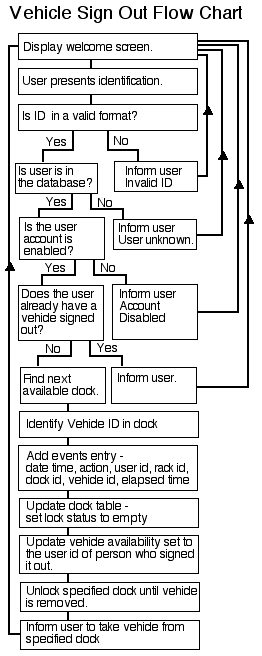
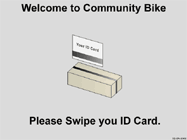

Picture 1: A mockup of the welcome screen
presented to a user.
Picture 2: A mockup of the instructions given to the user once they have
been authenticated and a vehicle has been released from the rack.
White Bike Depo Vehicle Sign-Out
The Amsterdam White Bike Depo program used SmartCards for user identification. SmartCards were already a widely used technology in Amsterdam.Insert SmartCard. Select Destination. Vehicle released.

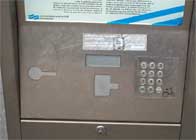
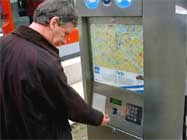
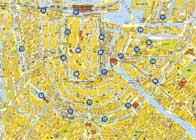
Picture 1: White Bike Depo stall
Picture 2: White Bike Depo stall checkout.
Picture 3: Luud Schimmelpennink demonstrating how to sign out a bicycle.
Picture 4: Map indicating depo rack locations around the city.
Adshel SmartBike
Adshel has a card reader located at each individual dock. The dock uses a simple LED interface to give user feedback. A user
LeisureTec BikeStation Vehicle Sign-Out
LeisureTec system was designed to accept a credit card or bank card for charging and identifying users.
Vehicle Sign-in
Community Bike
Returning a bicycle was designed to be as simple as possible. The user simply brings the vehicle to any community rack and inserts it into an available dock. The vehicle is automatically identified by the touch memory, which simultaneously verifies the vehicle is actually in the dock. The lock is immediately engaged and all vehicle and user database records are updated.
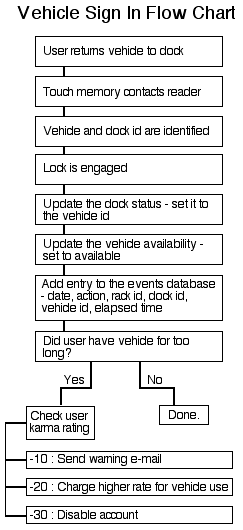
White Bike Depo Sign-in
Adshel SmartBike Sign-in
To return a bicycle to a SmartBike dock, the user must insert their System ID Card, and slide the bicycle into the slot. The vehicle and user are identified.
LeisureTec Bike Sign-in
System Communication
When a user signs out a vehicle from a rack, they have the option of returning the vehicle to any of the racks in the system. In order to identify users and vehicles from any rack, there must be a network for each rack to communicate.
Community Bike System Communication
The Community Bike Project was designed with a centralized server which stores all information for tracking users, vehicles, and rack status. This information is stored in an SQL database. At each rack, there is a computer which communicates with the central database. Each rack computer controls the interface for signing out a vehicle and the state of each dock lock (locked or unlocked). It is also responsible for identifying each vehicle upon return through the touch memory interface. All information gathered is sent back to the central database.
The communication to the central database is achieved using a standard TCP/IP network. For security purposes, it may be necessary to have a private network for rack/central server communications. During the prototyping phase, communication was achieved using a wired ethernet network. This however would likely be unsuitable in certain instances where racks were located far from a wired network. In this case, wireless technology could be used. A move to the popular Wi-Fi 802.11 wireless protocol would be fairly straight forward, but requires the racks to be in fairly close proximity (300-1000 ft.) to a wireless access point. Wireless cellular phone networks could be used for very remote racks, or communities that don't have an existing network. While fairly straight forward to implement, extra thought would need to be given because having a constant constant connection to the network would likely be costly. When a user signs out a vehicle, the rack computer could initiate a wireless dial-in session. However it may take too long for the rack computer to establish a connection. A possible solution would be to have a local database stored on each rack computer which was then synchronized with the central server periodically. The other benefit of this method is that if the central server ever becomes unreachable due to a network outage, vehicles can still be easily returned. While more complex, this last option is likely the best since network outages and remote racks are likely to occur.

This diagram illustrates the communication of all the hardware in the
community bike design.
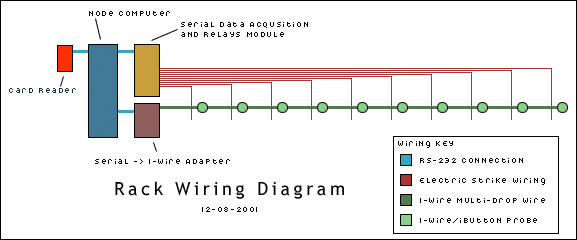
This diagram illustrates how the rack components are connected to each
other.
White Bike Depo System Communication
The system was designed in conjunction with KPN Telecom. KPN makes most of the public phone and public internet kiosks located on the streets of Amsterdam. The Depo stalls I observed had the interface for signing out a bicycle on one side, and two pay phones installed on the opposite side. Because phone lines were installed, the system likely used wired dial-up to communicate.
Dial up. Stalls were designed in conjunction with the phone company. Stalls also have phones built-in. Find source. (I think it's mentioned on the old Y-Tech site.)
Adshel SmartBike System Communication
According to Creacom's website, each rack computer connects to a central server using the GSM cell phone network via a Siemens Module M1.

Picture 1: A Siemens M1 module used by Adshel
to transmit data wireless via a GSM cell network.
LeisureTec Bike System Communication
Unknown. It's definitely networked and they also do credit card verification.
Software
The software takes care of the underlying operation of an automated bike program. Software is responsible for controlling the various pieces of hardware in the system: touch memory reader, relay controller, locks, etc. It also stores the gathered information from these devices. The data is usually stored in some sort of database, which allows quick reading and writing of the information. The database stores data which is used to track users and vehicles.
Community Bike Project Software
Before I started developing code, I first came up with specifications that the software would need to meet. I then needed to decide what technologies and tools I was going to use to implement the software. I decided on the following requirements:
- Use development tools which would allow rapid development for the first proof-of-concept prototype.
- Design the software in a manner which would allow maximum code reuse in future versions.
- Use standard, well known protocols and tools that others could easily use, implement andy modify
- Use open source, Free software for philosophical reasons and to reduce expense.
- Share our source under an Open Source license so others can use, modify, and extend the software.
Using the above requirements I decided to develop the software on the Linux operation system. Linux is a Free and Open Source operating system which runs on wide array of hardware. The software should also work on other Unix variants. It could even be modified to work on Windows.
The majority of the code was developed using Perl. Perl is a Free and Open Source interpreted language. I chose it because it allows rapid development, it is widely used, it has solid database connectivity, and there is extensive documentation for it. Execution time in the software is not critical, therefore, I believe Perl could be used in the future versions.
The Perl database connectivity was written with Perl DBI. This abstracts database calls allowing one to use the same code for a number of different databases. For a database I chose mySQL. I was already familiar with it and it met my needs. It is also Free and Open Source. PostgreSQL is also an excellent SQL database. In fact, it's likely better than mySQL. However, there is typically less documentation for PostgreSQL.
There are two pieces of software which run simultaneously on the rack computer. One takes care of the signing out of vehicles, the other takes care of signing in vehicles.
The code is in very early development but operates enough for demonstration purposes.
You can view the source, in a web page, using the below links:
- Check Out Code - check_out.pl
- Check In Code - check_in.pl
Note, the source hasn't been released under any license at this time. I intend to release the code under the GPL or similar license.
You can download the source code here:
community_bike_0.01_20020430.tar.gz
Community Bike Project Database
The Community Bike Program database is responsible for keeping track of all vehicles, users, and racks. It stores information such as:
- Whether specific docks are empty or full.
- Which vehicles are in which locks
- Who has signed out a vehicle. Which vehicle it is. When they signed it out. When they returned it.
| Table: events | |||
|
Description: Records a history of events. Keeps track of:
|
|||
| Field Name | Data Type | Example Data | Description |
| event_id | int unsigned | 23 | An auto incrementing unique id |
| date_time | timestamp(14) | 20011208120445 | Date_time the event took place |
| action | enum | sign_out, sign_in, remote_oos, remote_is, error | Whether the vehicle is being taken, returned, remotely put in or taken out of service, or if an error has occurred. |
| user_id | mediumint unsigned | 123456 | The user id of the person signing in/out the vehicle |
| rack_num | tinyint unsigned | 5 | The rack the vehicle was signed out/in to/from |
| dock_num | tinyint unsigned | 8 | The docking station the vehicle was signed out/in to/from |
| vehicle_num | tinyint unsigned | 16 | User friendly vehicle identification num |
| time_interval | smallint unsigned | 60 | Number of minutes before the user must return the vehicle. Null for returns or other events. |
| Table: dock | |||
| Description: This table keeps track of the status of each and every dock on all the racks. It's used to determine what dock to unlock etc. | |||
| Field Name | Data Type | Example Data | Description |
| dock_id | varchar(16) | AD0000087124BA01 | 1-wire serial number for each dock. Used internally. |
| dock_num | tinyint unsigned | 3 | dock id (unique to each rack) |
| rack_num | tinyint unsigned | 2 | rack id (unique to each system) |
| dock_status | varchar(5) | empty, 16 (vehicle_num) | Whether the dock has a vehicle in it or not. If it does, it's set to the vehicle_num. |
| Table: vehicle | |||
| Description: Used for keeping track of vehicles. | |||
| Field Name | Data Type | Example Data | Description |
| vehicle_id | varchar(16) | 58000006377AD201 | ID stored on the iButton. Used internally. |
| vehicle_num | tinyint unsigned | 16 | User friendly vehicle number. Used to easily identify vehicles |
| availability | varchar(11) | available, unavailable, 0533928 | Available means it's in a dock ready to be signed out, unavailable means it is out of service, if it's signed out, it's set to the user_id of the person who signed it out. |
| vehicle_type | enum | scooter, bicycle | Describes what the vehicle is, a scooter, bicycle, etc. |
| description | text | More indepth description of the vehicle | |
| Table: user | |||
| Description: The database is responsible for keeping track of every user in the system. If you already have an existing user database, you can either automate the import of data on a regular schedule, or modify the code to authenticate with the external database directly. | |||
| Field Name | Data Type | Example Data | Description |
| user_id | mediumint unsigned | 1234567 | user id |
| account_status | enum | enabled, disabled | If the user user never returned a scooter etc. they're account_status is set to disabled and they can't sign out a scooter. |
| first_name | varchar(20) | Joe | user first name |
| last_name | varchar(20) | Brown | user last name |
| phone | varchar(12) | 413-555-1234 | phone number |
| varchar(100) | joe_brown@hampshire.edu | email address | |
User Karma
While having individual accountability is paramount for a successful bike program, it is also key to have your users invested in the program. User investment in an automated system is more complicated than with simpler community bike programs. An automated bike program involves computers, networking, and electronics. These require special expertise to set up and maintain. In an anarchic system, the only expertise required is fixing and distributing the bicycles. It's fairly easy to teach community members how to fix bicycles. Ease of involvement means the project will likely have more individuals involved and they will be more invested in the program.To get users invested in an automated program you must take advantage of the ability to track each individual user. Doing so enables you to encourage and discourage actions at a per user level. To keep track of each individual, I propose system of "User Karma", where each individual starts with 0 karma points and is rewarded with positive points for doing good things such as taking a bicycle from a full rack to an empty rack, and has points taken away when they do bad things such as returning a bicycle late. Once certain thresholds are met, certain actions could be taken. For example, if you normally charge users to use a bicycle in your program, if a user reaches a high karma level they may get a price reduction. If a user reaches a small negative threshold, they may be contacted and informed of their late vehicle return. If they then reach a very low negative threshold, their account status could be set to disabled and they would no longer have the privilege of checking out a vehicle.With the positive reinforcement example of taking a vehicle from a full rack to an empty rack, the user not only benefits individually, but it of course helps the community. By enabling the user to help their community, they become invested in the program.
Data: Who are community bike programs for, and who traditionally uses them.
Singapore Adshel web site has some data on this.
System Administration
Vehicle Tracking
An advantage of automated bike programs is that it is possible to store data which reflects how the program is being used. This information can be used to predict future use patterns.
Real Time Position Tracking
While tracking each vehicle in "real time" is technically possible, it is still prohibitively expensive. In the future, this will likely be possible using GPS technology. This will enable to track vehicles with much finer detail, which could be useful for getting a better idea exactly how the bicycles are being used in your community. If a bicycle is stolen, it would be possible to track it's approximate locatioin for retreival. Because this technology could be used to track where an individual person was at a specific time, it also raises some privacy concerns.
More information about this technology is available here.
Rack to Rack Data
By identifying individual bicycles at each rack, data can be used for a number of purposes. The most obvious of which is simply making sure vehicles are not behing stolen. And if they do disappear, identifiying who was last responsible for the vehicle.
This data can also be used to observe traffic patterns in the community. You can use this information to determine high traffic areas which might benefit from additional racks. It would also be possible to write software that could use historical data to predict future vehicle use. This would allow you to take pre-emptive actions to ensure maximum bicycle availability. These actions may include modifications to your vehicle redistribution routine, or you take certain steps to encourage/discourage users to use your system in a certain way. For example, if from historical data you predict there will be a vehicle shortage at a certain rack at a certain time, you could offer a reward to someone to return a vehicle to that rack. Or you could dynamically alter the amount of time the user can sign-out the vehicle.
Adshel
According to Capital City Posters, the Singapore part of Adshel, each bike has an embedded chip which allows each bike to be tracked with Global Positioning System (GPS) Technology. No other material, including the Adshel patent has information that confirms this. This information is likely incorrect as the cost of implementing such a system would be prohibitively expensive.
Vehicle Distribution
A pitfall of automated community bike programs is that each rack has a finite number of vehicles it can accommodate. Depending on your community's traffic patterns, this could be anything from a minor inconvenience to a major headache. In theory, an area which is a popular destination spot, would likely also be a popular departure spot. Over longer periods of time the arrival to departure ratio may be fairly even, however there will most definitely be times where the ratio is very unequal and the small number of vehicles each rack can accommodate. will not be able to smooth out the spikes in use.
In order to keep the system in operation you can:
- Increase number of docks/racks - An obvious and expensive solution. In order to sustain peak demand, many vehicles will be unused during low use periods.
- Require user to enter destination upon vehicle check out - doesn't necessarily reduce the problem, but it prevents users from arriving at a full rack.
- Give user feedback and alternatives - During check-out, inform the user of each rack status and if a rack is full, where they can find the next closest available rack.
- Redistribute vehicles - Most common, but most labor intensive. Have someone redistribute bicycles from full racks to empty racks.
- Provide incentives and penalties - It is possible to get community members to help you with redistribution by giving them an incentive to ride a bicycle from a full rack to an empty rack. While surely to be less popular with the community, you could also penalize users for
White Bike Depo Bicycle Distribution
The White Bike Depo program used several of the above techniques to regulate the system. They had individuals redistribute bicycles with a custom designed, pedal powered vehicle which could tow several bicycles at once.
According to _______ they also rewarded users by charging less for those who rode a bicycle from a full rack to an empty rack.
Upon sign-out, the individual had to enter their destination. The system was designed to prevent users from becoming frustrated by arriving at a full rack, by either reserving a space, or recommending a nearby rack which had an available space.
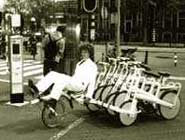
Picture 1: A white bike program worker redistributing
bicycles via a specially designed pedaled powered vehicle capable of towing
several bicycles at once.
Adshel Bicycle Distribution
The Adshel bike system uses a van for vehicle maintenance and bicycle redistribution. The van regularly visits each rack in the system. According to Creacom's website each rack has the ability to send a message to a regular GSM phone to the person in the van. The system can inform the van driver of the current status of a rack, full, empty, etc. while they are in the van.
The van itself is capable of carrying several bicycles, and has a built-in ramp and stair case for easy loading and unloading.

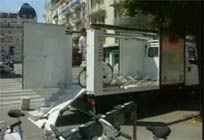
Picture 1: An Adshel redistribution van full of bicycles.
Picture 2: A bicycle being unloaded from an Adshel van.
Administration Interface
To operate a Automated bike program, it is important to easily be able to administrate the system from a centralized interface. The interface should allow an authenticated adminstrator to observe the status of each element of the system including users, racks, docks, vehicles, and system events. Each of these elements should also have an interface for manipulation. For example, if a vehicle has been reported to be in need of maintenance, the administrator could remotely place that particular vehicle (more accurately the dock the vehicle is in) into an "out of service" state.
Community Bike Administrative Interface
The community bike project began creating mock-ups for an administrative interface. The purpose was to identify the needs of such an interface, and how administrative tasks could be easily taken care of remotely and by someone with little special training.
We decided the interface should be web based. This would allow a familiar interface for users, which could be used from any internet connected computer.
The community bike administrative interface mock-up is available here.
System Cost
Vehicle rack
- locking mechanism
- identification equipment
- computer Node equipment
- low-end computer
- card reader
- display
- controller equpment
- materials
Vehicle construction scooter/bicycle
- Off the shelf equipment
- materials
Centralized Computer Equipment
- Centralized server
- Software
Liability
To our knowledge, there has not been a single lawsuit in regards to an injury resulting from a community bicycle. While none of these precautions have been tested in court, they are still recommended:
- Talk to a lawyer - Law is complicated and I am not a lawyer.
- Use at Your Own Risk - Many programs place stickers on their bicycles stating that the bicycle is to be used at your own risk. However, several people feel this will not hold up in court. Most suggest you do it anyway.
- Sign a waiver - Some programs require users to sign a waiver that they understand the risks and won't hold the Bike Program responsible for any injury resulting from riding the bicycles.
- Use Safe Equipment - Obvious, but an important way to avoid problems is to keep the bicycles in good working order. This is where using reliable parts such as a coaster back-pedal brake, as opposed to hand brakes is important.
- Provide Safety Gear - Some programs provide people who sign bikes out with a helmet. Others strongly encourage the use of helmets.
- Use Liability Insurance
For more information on liability read the liability section on the International Bicycle Fund website.
Frequently Asked Questions
What happens when a rack is full?
One way to address the problem is to have users
enter their destination when they sign out a vehicle. Doing so would reserve
a spot in the destination rack. This technique was used in the Amsterdam
White Bike Depo. According to Paul DeMaio who had a conversation with
the system inventor, it was received with mixed results by users. Some
people felt put off by the big brother aspect and others may not know
where they will end up, for instance, they may just being using the vehicle
for recreation.
How many vehicle racks are required?
The number of racks in a community will vary
widely depending on the area of the community, the population, and traffic
patterns. Using rough estimates for Hampshire College, I'm guessing we
would need 10-15 racks around campus. (The traveled part of campus is
fairly small. We have about 1500 community members. We haven't done a
formal study of traffic patterns.) It's also possible that some racks
may be able to accommodate more vehicles than racks depending on how much
traffic each area receives.
The Amsterdam White Bike Depo program was proposing to have 45 racks installed for the city of Amsterdam. Population: 1,149,000 (2000 estimate, Source: United Nations Population Division, 1996)
The city of Rennes, France, population 200,000 has 25 racks.
Bukit Batok has 10 racks. The initial system limited to 700 people which were required to live in a certain area.
How many vehicles will each rack accommodate?
Although fairly easy to change, the Community
Bike Project rack was designed to accommodate 6-12 bicycles.
Adshel racks accommodate. 12 bicycles.
How many total vehicles will be used in the system?
We need to do more traffic analysis at Hampshire.
The ration of available docks to the number of bikes in the system is
also yet to be determined. If there are too many bikes in circulation,
racks will likely become full to often. We hope 50-100 vehicles will be
able to accommodate Hampshire's community.
Amsterdam White Bike Depo program proposed to use 750 bicycles to go with the 45 racks.
According to the Gazette article, Bukit Batok Adshel program planned to use 100 bicycles.
Why was the use of scooters considered?
We are designing our system to accommodate scooters, bicycles, or
similar vehicles such as the recently introduced Segway
Human Transporter. We are exploring the use of scooters for several
reasons. To our knowledge scooters have never been used in a community
bike project. We think it would be a good match because scooters are cheap,
use simple construction, easy and fun to use by various body sizes.
In community bike programs, how often are the bicycles used, and who is using them?
Will the user be charged each time they use a vehicle?
Our intention at Hampshire is provide vehicle use for no charge to
the user. We want to make the use of green transportation as appealing
as possible. The system and its maintenance would be paid for by outside
funding, or by the college itself. In other implementations at different
campuses or cities, the use could be charged a flat fee, or a per use
fee.
Will there be a time limit as to how long a user can use a scooter?
The system is primarily intended to be a quick means of travel between
campus buildings, not a long-term sign-out vehicle. In order for vehicles
to be available to the most number of users, we plan to place a time limit
on vehicle. use. A specific time limit has not been determined. It's possible
that the time limit may vary depending on certain variables. Such variables
include the number of scooters available, and historical scooter use.
For example, as the program is used, vehicle. use will be archived. Analyzing
this data may show that scooters are in high demand at specific times
of the day.
What if the user has the scooter longer than their time limit, never
returns the it, or damages the scooter?
Because the system tracks vehicle use by individual, the system would
work in a similar way libraries sign out books. If the vehicle. is returned
late, not at all, or damaged, the individual can be charged.
What sort of maintenance is required in an advanced community bike
program?
The system is being designed to minimize the amount of maintenance
required. This is being accomplished by:
- using high quality, strong, simple vehicles
- using computer controlled locking racks
The maintenance required includes:
- dependent on traffic patterns, we may have to transport vehicles from full racks to empty racks.
- Vehicles will need to be checked occasionally for wear. Those vehicles need to be taken in for repair.
References
For a complete listing of all the material used for this project see CommunityBike.org references page
Acknowledgments
Many thanks to the follow people who were a tremendous help:
My Division III Committee Jaime Davila and John Fabel. They get listed first because they get to say whether I graduate or not.
Corin. Wow.
My entire family for supporting my efforts even though they don't understand what I'm doing.
Adam Shapiro who should have been on my Committee.
Tom Corso for all his advice and help with electronics. He really should get a diploma of his own.
Fred Wirth, Ethan Goldman, and Bob Crowley for their helpful input.
The City of Amsterdam for showing me and the World that a bicycle really can be a primary mode of transportation.
Paul DeMaio for his well written documents on Automated Bike systems and his numerous pointers to other helpful information.
The folks at Lemelson, specifically Glenn for helping out with the construction of prototypes.
The very nice guy at Intersoft for reaffirming that moral business people still do exist. He informed me of touch memory when I was about to buy RFID equipment from him.
^ Top | Community Bike Home
